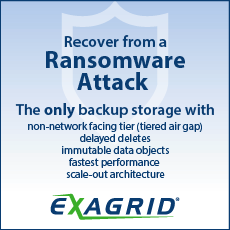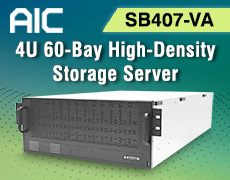NetApp Adds Two Capacity EF-Series Flash Systems
EF300C and EF600C available with minimum of 12x up to a maximum of 24xQLC NVMe SSDs, and supports NVMe QLC drives (mixing of QLC and TLC drives is not allowed)
This is a Press Release edited by StorageNewsletter.com on February 12, 2025 at 2:02 pm
By Mitch Blackburn, technical marketing engineer, NetApp, Inc.
NetApp, Inc. is expanding this line by adding 2 new capacity flash systems with the introduction of EF300C and EF600C.
The EF-Series provides the fast, affordable, block storage that organizations require for demanding block workloads such as media and entertainment, HPC/AI, and high-performance databases.
The additional capacity available now enables the arrays with the ability to store an application backup, expand the analytics capabilities of a video surveillance system, or even provide a warm tier for an application such as Splunk.
With high performance and ultra-high throughput, the new systems will improve operational efficiency, help accelerate the transition from E-Series HDD-based systems to all-flash and meet increasing capacity needs without compromising performance or reliability. And EF-Series delivers all of this at a wide range of low-cost, performance and capacity options.
Simple and enhanced workload performance
EF-Series systems have high data availability and deliver up to 99.9999% availability when systems are properly sized, deployed, and maintained. They also include NetApp Active IQ technology to enhance your ongoing product experience.
To fully maximize your performance, only minor setting changes are required in EF300C and EF600C when creating disk pools, volume groups, or volumes to switch between high-IOs configurations and high-throughput configurations. This characteristic makes EF-Series arrays easy to deploy regardless of your workload. You can apply these highly flexible SAN building blocks when you need them and plug them into your current application environment on demand without disrupting your primary storage management strategy. EF-Series arrays can operate in a space as small as 2U, seamlessly integrate with many software layers, and still deliver consistent performance. This makes it an optimal SAN building block for enterprises of any size that need to support demanding workloads.
EF300C and EF600C arrays use the web-based SANtricity System Manager GUI to manage individual arrays, and SANtricity Unified Manager to enable you to organize and manage multiple hybrid E-Series and EF-Series arrays from a central management application. The built-in web services API integration or the management client-based web services package makes the EF-Series product line easier than ever to integrate with your standard API-driven environment.
The EF300C and EF600C continue the E-Series legacy of providing fast, simple, reliable, and flexible SAN storage for your specialized block workloads with affordable high-density all flash storage.
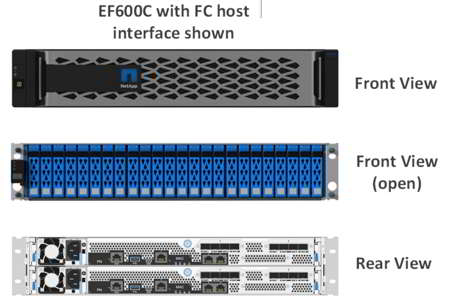
What’s new in high-density systems
What you already know about the existing EF300 and EF600 systems will still be valid for the EF300C and EF600C. These systems, however, will differ in what the arrays support.
- Only supports NVMe QLC drives (mixing of QLC and TLC drives is not allowed).
- Available with a minimum of 12x up to a maximum of 24xQLC NVMe SSDs.
- The only drives supported will be 30TB or 60TB NVMe QLC drives.
- Expansion shelves are not supported.
- Default configuration is a single Dynamic Disk Pool (DDP) which is automatically created using all available drives for simplicity in management. If a new drive is inserted, Dynamic Capacity Expansion (DCE) will start automatically to incorporate the new drive into the existing DDP.
- If the default configuration is used, drive capacities cannot be mixed in the storage array.
- The default configuration can be deleted. This allows for manual creation of one or two pools and the use of both 30TB and 60TB drives in the same array
- Standard RAID (5,6,10) volume groups are not supported.
- IOP and latency performance of EF300C and EF600C are reduced using QLC drives.
All the EF-Series arrays support the SCSI protocols – iSCSI and FC for customers not yet ready to change their networks, as well as the NVMe protocols – NVMe over Fibre Channel (NVMe/FC), NVMe over InfiniBand (NVMe/IB) and NVMe over RoCE (NVMe/RoCE). SRP/IB, and iSER/IB are also supported.
This versatility is enhanced by the large capacity SSD choices of either 30 or 60TB QLC drives to achieve the price/performance combination that best fits your specific business needs.
Click to enlarge
Resources on EF-Series arrays:
EF-Series All-Flash Arrays
TR-5004: Introduction to NetApp EF300C Array
TR-5005: Introduction to NetApp EF600C Array
TR-4877: Introduction to NetApp EF300 Array
TR-4800: Introduction to NetApp EF600 Array






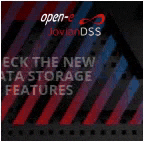


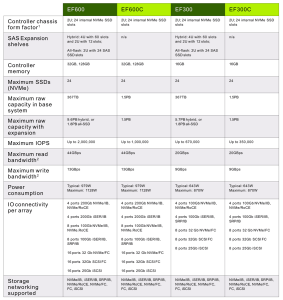
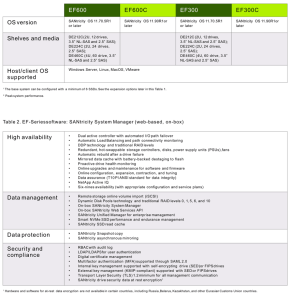






 Subscribe to our free daily newsletter
Subscribe to our free daily newsletter
